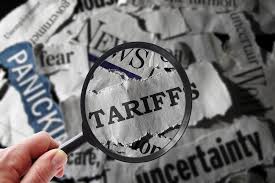
Late last week, President Trump told TIME magazine—and reiterated to reporters departing the White House for Rome—that formal discussions with Chinese counterparts on tariff reductions were already in motion and that President Xi Jinping had personally reached out to him to advance talks. He characterized such engagement as a potential “big win” if China agreed to open its markets further to U.S. exporters.
Beijing’s Categorical Denial
Within hours, the Chinese Embassy in Washington posted a statement quoting the Ministry of Foreign Affairs to “stop creating confusion,” insisting that “China and the U.S. are NOT having any consultation or negotiation on tariffs.” A separate Memorial Day statement from Foreign Minister Wang Yi, delivered at a regional ministers’ meeting in Kazakhstan, condemned unilateral U.S. tariff actions as “extreme egoism” and international bullying, even as Beijing pledged to work with other nations to counter these measures.
Amid the rhetoric, both sides quietly took limited steps toward de-escalation. China exempted selected U.S. medical products and semiconductors from its retaliatory tariffs and invited firms to propose additional critical goods for duty-free status. Meanwhile, U.S. trade officials signaled a willingness to renegotiate tariff levels, citing mutual recognition that a protracted standoff was unsustainable. Yet formal talks remain unacknowledged by Beijing, exacerbating the sense that any breakthroughs—or backtracks—are being orchestrated behind a veil of official denials.
Market and Business Reactions
Global equity indices oscillated on reports of both progress and deadlock. Wall Street posted modest weekly gains as select corporate earnings buoyed sentiment, but trading sessions were punctuated by sharp intraday swings tied to each new statement from Washington or Beijing. The yuan rebounded against the dollar on whispers of exemptions and de-escalation, only to retreat when official sources reiterated that talks remained off the table.
Multinational manufacturers and importers report difficulty in planning inventory replenishments amid conflicting signals on tariff timelines. Procurement officers at U.S. electronics firms told Bloomberg they faced “a countdown to chaos,” unable to determine whether duties would fall, remain at 20–50 percent or skyrocket to 145 percent on Chinese goods. Retailers are similarly scrambling: some have postponed orders to avoid buying into stockpiles subject to higher tariffs, while others have accelerated shipments to beat duty hikes—choices that carry significant working-capital implications.
At the IMF-World Bank spring meetings in Washington, finance ministers from Europe, Asia and Latin America pressed U.S. Treasury Secretary Scott Bessent for clarity on the U.S. tariff agenda, warning that policy uncertainty was already weighing on investment and consumer confidence. “We need to leave no stone unturned to reduce that uncertainty,” said Ireland’s Finance Minister Paschal Donohoe, reflecting a consensus that the dispute posed “significant risks” to jobs and growth globally.
While U.S. officials touted swift progress in talks with allies such as Japan and South Korea, those governments adopted cautious tones. South Korea described its initial meeting with Bessent as a “good start,” yet declined to confirm any concrete outcomes. Japan is widely viewed as a “test case” for concessions that might be extended to China, but observers caution that Tokyo’s own economic priorities—auto exports and agricultural protections—could complicate a template agreement.
Diplomatic Maneuvers Behind the Scenes
The White House has reframed its tariff policy as a mechanism to compel market reforms, arguing that sustained duties will “free up” China by forcing it to dismantle non-tariff barriers and regulatory bottlenecks. Trump insisted that even if tariffs remained at 20–50 percent in a year’s time, he would consider that a “total victory.”
China, for its part, is amplifying ties with the Global South to insulate against potential U.S. pressure. President Xi Jinping’s recent visits to Vietnam, Malaysia and Cambodia underscored Beijing’s bid to present itself as a reliable partner, while UNCTAD data show that South-South trade flows outpaced North-North exchanges in 2023. Policymakers in Beijing view limited tariff exemptions not as concession but as tactical relief to sustain domestic industries while broader trade diplomacy continues.
Why the Confusion Persists
In the run-up to the U.S. presidential election, the administration faces pressure to demonstrate toughness on China. Public assertions of “ongoing negotiations”—even if premature—serve to reassure some constituencies that the White House is in command of the process, while also forestalling criticism for having relaunched trade hostilities. “Mixed messaging can be political cover,” says a Washington trade advisor.
China’s leadership is loath to acknowledge direct talks under duress, fearing domestic backlash over perceived capitulation. Official denials buy time for Beijing to explore multilateral and bilateral alternatives, from WTO disputes to expanded ties with ASEAN and emerging markets, without the political optics of negotiating at the U.S. president’s insistence.
Unlike formal WTO or FTA discussions, the current tariff dialogue lacks codified protocols or stable negotiating teams. Ad hoc statements by presidents, ambassadors and ministry spokespeople often clash, reflecting blurred lines of authority and coordination challenges across agencies. Until a clear framework is established, public pronouncements will continue to diverge.
Expert Perspectives
Economists and trade experts urge both governments to agree publicly on a joint framework—defining negotiators, timelines and objectives—to end the current ambiguity. “Clarity on process begets clarity on outcomes,” argues a senior fellow at a leading think tank, noting that private sector stakeholders require predictable rules to plan capital expenditures and employment.
Analysts outline three possible paths:
Which scenario unfolds will hinge on the next round of high-level contacts, possibly at the upcoming G7 summit, where Japanese Prime Minister Shigeru Ishiba’s meeting with Trump could set a precedent for any accommodating approach toward China.
As global businesses monitor each statement from Washington and Beijing, the lack of a unified message only deepens the fog of uncertainty permeating today’s trade environment—underscoring that without a transparent negotiation process, confusion is likely to persist.
(Source:www.theprint.in)
Beijing’s Categorical Denial
Within hours, the Chinese Embassy in Washington posted a statement quoting the Ministry of Foreign Affairs to “stop creating confusion,” insisting that “China and the U.S. are NOT having any consultation or negotiation on tariffs.” A separate Memorial Day statement from Foreign Minister Wang Yi, delivered at a regional ministers’ meeting in Kazakhstan, condemned unilateral U.S. tariff actions as “extreme egoism” and international bullying, even as Beijing pledged to work with other nations to counter these measures.
Amid the rhetoric, both sides quietly took limited steps toward de-escalation. China exempted selected U.S. medical products and semiconductors from its retaliatory tariffs and invited firms to propose additional critical goods for duty-free status. Meanwhile, U.S. trade officials signaled a willingness to renegotiate tariff levels, citing mutual recognition that a protracted standoff was unsustainable. Yet formal talks remain unacknowledged by Beijing, exacerbating the sense that any breakthroughs—or backtracks—are being orchestrated behind a veil of official denials.
Market and Business Reactions
Global equity indices oscillated on reports of both progress and deadlock. Wall Street posted modest weekly gains as select corporate earnings buoyed sentiment, but trading sessions were punctuated by sharp intraday swings tied to each new statement from Washington or Beijing. The yuan rebounded against the dollar on whispers of exemptions and de-escalation, only to retreat when official sources reiterated that talks remained off the table.
Multinational manufacturers and importers report difficulty in planning inventory replenishments amid conflicting signals on tariff timelines. Procurement officers at U.S. electronics firms told Bloomberg they faced “a countdown to chaos,” unable to determine whether duties would fall, remain at 20–50 percent or skyrocket to 145 percent on Chinese goods. Retailers are similarly scrambling: some have postponed orders to avoid buying into stockpiles subject to higher tariffs, while others have accelerated shipments to beat duty hikes—choices that carry significant working-capital implications.
At the IMF-World Bank spring meetings in Washington, finance ministers from Europe, Asia and Latin America pressed U.S. Treasury Secretary Scott Bessent for clarity on the U.S. tariff agenda, warning that policy uncertainty was already weighing on investment and consumer confidence. “We need to leave no stone unturned to reduce that uncertainty,” said Ireland’s Finance Minister Paschal Donohoe, reflecting a consensus that the dispute posed “significant risks” to jobs and growth globally.
While U.S. officials touted swift progress in talks with allies such as Japan and South Korea, those governments adopted cautious tones. South Korea described its initial meeting with Bessent as a “good start,” yet declined to confirm any concrete outcomes. Japan is widely viewed as a “test case” for concessions that might be extended to China, but observers caution that Tokyo’s own economic priorities—auto exports and agricultural protections—could complicate a template agreement.
Diplomatic Maneuvers Behind the Scenes
The White House has reframed its tariff policy as a mechanism to compel market reforms, arguing that sustained duties will “free up” China by forcing it to dismantle non-tariff barriers and regulatory bottlenecks. Trump insisted that even if tariffs remained at 20–50 percent in a year’s time, he would consider that a “total victory.”
China, for its part, is amplifying ties with the Global South to insulate against potential U.S. pressure. President Xi Jinping’s recent visits to Vietnam, Malaysia and Cambodia underscored Beijing’s bid to present itself as a reliable partner, while UNCTAD data show that South-South trade flows outpaced North-North exchanges in 2023. Policymakers in Beijing view limited tariff exemptions not as concession but as tactical relief to sustain domestic industries while broader trade diplomacy continues.
Why the Confusion Persists
In the run-up to the U.S. presidential election, the administration faces pressure to demonstrate toughness on China. Public assertions of “ongoing negotiations”—even if premature—serve to reassure some constituencies that the White House is in command of the process, while also forestalling criticism for having relaunched trade hostilities. “Mixed messaging can be political cover,” says a Washington trade advisor.
China’s leadership is loath to acknowledge direct talks under duress, fearing domestic backlash over perceived capitulation. Official denials buy time for Beijing to explore multilateral and bilateral alternatives, from WTO disputes to expanded ties with ASEAN and emerging markets, without the political optics of negotiating at the U.S. president’s insistence.
Unlike formal WTO or FTA discussions, the current tariff dialogue lacks codified protocols or stable negotiating teams. Ad hoc statements by presidents, ambassadors and ministry spokespeople often clash, reflecting blurred lines of authority and coordination challenges across agencies. Until a clear framework is established, public pronouncements will continue to diverge.
Expert Perspectives
Economists and trade experts urge both governments to agree publicly on a joint framework—defining negotiators, timelines and objectives—to end the current ambiguity. “Clarity on process begets clarity on outcomes,” argues a senior fellow at a leading think tank, noting that private sector stakeholders require predictable rules to plan capital expenditures and employment.
Analysts outline three possible paths:
- Rapid De-escalation: A short, secretive “mini-deal” freezes existing tariffs at moderate levels, with formal talks to follow under a bilateral verification mechanism.
- Prolonged Limbo: Both sides maintain ambiguous rhetoric while pursuing partial exemptions, leading to drawn-out bargaining without substantive market access gains.
- Renewed Escalation: One party perceives bad faith or insufficient progress and imposes deeper tariff hikes—potentially reigniting full-blown trade war dynamics.
Which scenario unfolds will hinge on the next round of high-level contacts, possibly at the upcoming G7 summit, where Japanese Prime Minister Shigeru Ishiba’s meeting with Trump could set a precedent for any accommodating approach toward China.
As global businesses monitor each statement from Washington and Beijing, the lack of a unified message only deepens the fog of uncertainty permeating today’s trade environment—underscoring that without a transparent negotiation process, confusion is likely to persist.
(Source:www.theprint.in)





